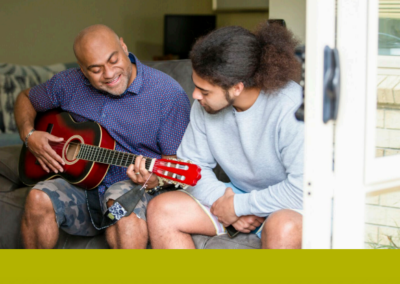Case Study_Monte Cecilia_FINAL

The garden and play area that social housing residents are not allowed to use. Photograph: Graeme Robertson/The Guardian
On a hot day in the summer of 2017, a dozen kids at a housing estate in south London went out to their nearby playground. Sprinklers were turned on as the kids played on the swinging tyre, their shouts and laughter echoing across the estate. Soon after, complaints were sent to residents – one about the noise, the other reminding parents that not all kids have a right to play in that space.
Though the residents of Lollard Street are neighbours, they do not have the same access to communal areas. The developer Henley Homes has been accused of blocking social housing residents from using shared play spaces at its Lilian Baylis Old School complex.
To gain planning permission for the development, the plans had to include “affordable” homes and social rental units. But a Guardian investigation found the designs were altered after planning permission was granted to block the social housing tenants from accessing the communal play areas.
Jane Bloomfield, 43, who bought her flat five years ago, said it came as a shock when she realised the children were being segregated. “One summer evening, we were all out in the play area and these kids were looking out the window and we asked them to come in and the kids said ‘We can’t’ … They are in school together, it’s unbelievably sad and fundamentally wrong.”
Bloomfield opened the gates on the other side to let the kids in and play. “The reason we got frustrated with it was because it is children. To have a really physical manifestation of segregation was very difficult to take as a mum … My daughter said to me: ‘But I don’t understand, why can’t they just come in and play?’”
Claudia Cifuentes, 38, is a social housing tenant who has lived in the block for four years. Her ground floor apartment looks directly on to the play area that her children are barred from using. “It’s discrimination what they’re doing,” she said, adding that her kids had to jump over the fence to play in the area. “My son and daughter don’t know they’re not allowed to go there. When I say no they think it’s because Mummy said no and that’s it. But I never told them it’s because they’re not allowed, because they’ll start asking questions and I don’t know how I’ll explain it.”
Daniela Rea, 33, has three children and has rented in the block for the last three years. She said when she viewed the property she was told her children would be able to use the play area, but that had changed by the time they moved in. “They know each other from school and the local area. They want to play together, but they can’t.”
She said her son, Alessandra, 12, used a wheelchair and would benefit from being able to access the play area. “He has a therapy bike and it just stays in the flat. Sometimes I have to carry it to the park, but I’ve stopped because it’s quite heavy as a bike.”
Alessandra said: “It makes me feel bad that I can’t use that play area. I want to play with the other children. And when it gets hot, normally they have parties and I have to watch it from my window.”
His sister, 13, said: “It saddens me. It’s really rude. We are living on the same planet and no child cares about who pays rent and who doesn’t. I think they should take that wall down and let us in.”
The play area set aside for social housing residents. Photograph: Graeme Robertson/The Guardian
Louise Whitley, who first raised the issue, said the policy was clear-cut segregation. “People can’t segregate our children and get away with it. It’s morally wrong.”
Gloria Dobson, 70, who has lived in the area her whole life, moved into the block as a social housing tenant three years ago. She said she believed the issue went beyond the play area. “They make us feel like we’re second class,” she said, adding that the lift was often broken in their block. “I had to stay in hospital for another week because the lift was broken … It got fixed but no one wanted to go in there because they’re so used to it breaking on them.”
Near the end of the day, children from both sides of the block came to play at the smaller park designated for the social housing tenants. One mother smiled, turned to another and said: “It’s lovely to see them playing together.”
Community Housing Aotearoa - 7 July 2025
Community Housing Aotearoa - Newsletter 3 June 2025
Community Housing Aotearoa_Media Release_Unlocking affordability key to ending homelessness_2025